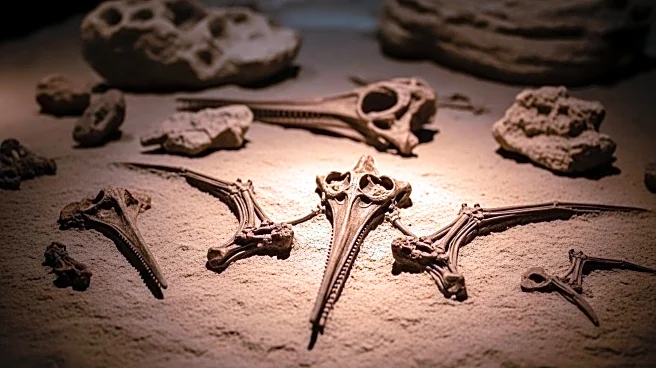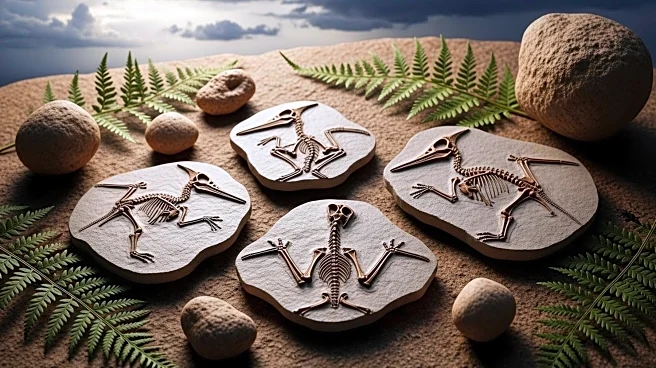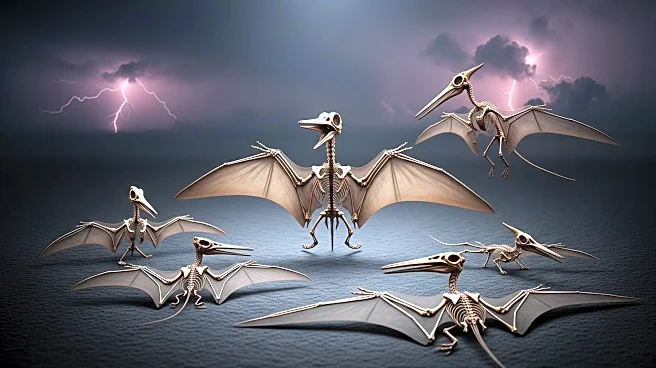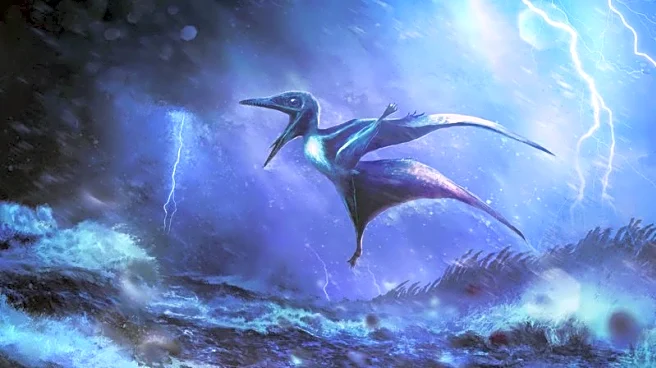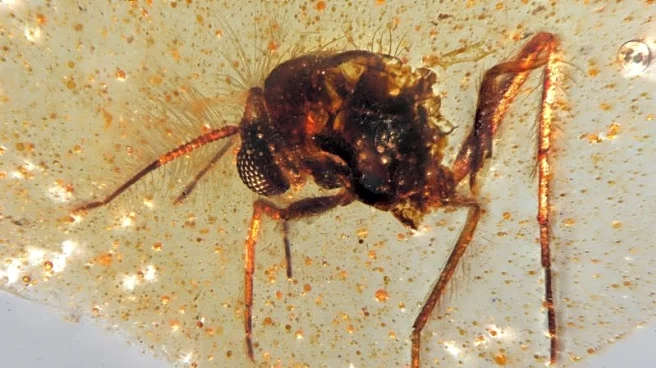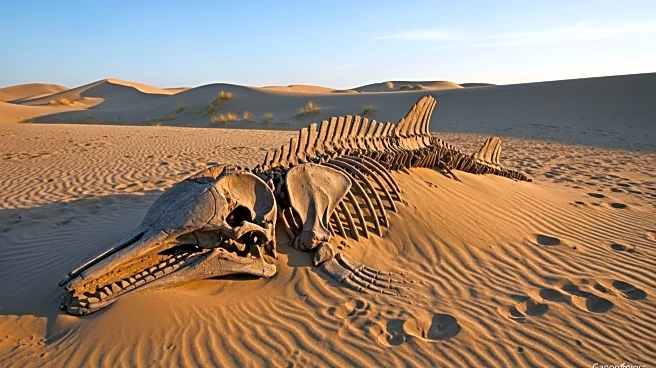What's Happening?
A recent discovery of two nearly complete pterosaur fossils, nicknamed Lucky and Lucky II, in southern Germany provides a rare glimpse into the lives and deaths of these ancient flying reptiles. The fossils, found in the Solnhofen Limestone, reveal that the young pterosaurs likely perished during a storm 150 million years ago. The study highlights the challenges in preserving larger pterosaur fossils, as the record is predominantly composed of juvenile specimens. The research utilized ultraviolet light photography to uncover hidden details, offering new perspectives on pterosaur development and fossilization processes.
Why It's Important?
This discovery is crucial for understanding the fossilization process and the environmental conditions that favored the preservation of juvenile pterosaurs over adults. It sheds light on the ecological dynamics of the Jurassic period, particularly how storms influenced the fossil record. The findings also contribute to the ongoing debate about the flight capabilities of young pterosaurs, suggesting they might have been capable of flight shortly after birth. This research enhances our understanding of prehistoric ecosystems and the evolutionary adaptations of ancient species.

